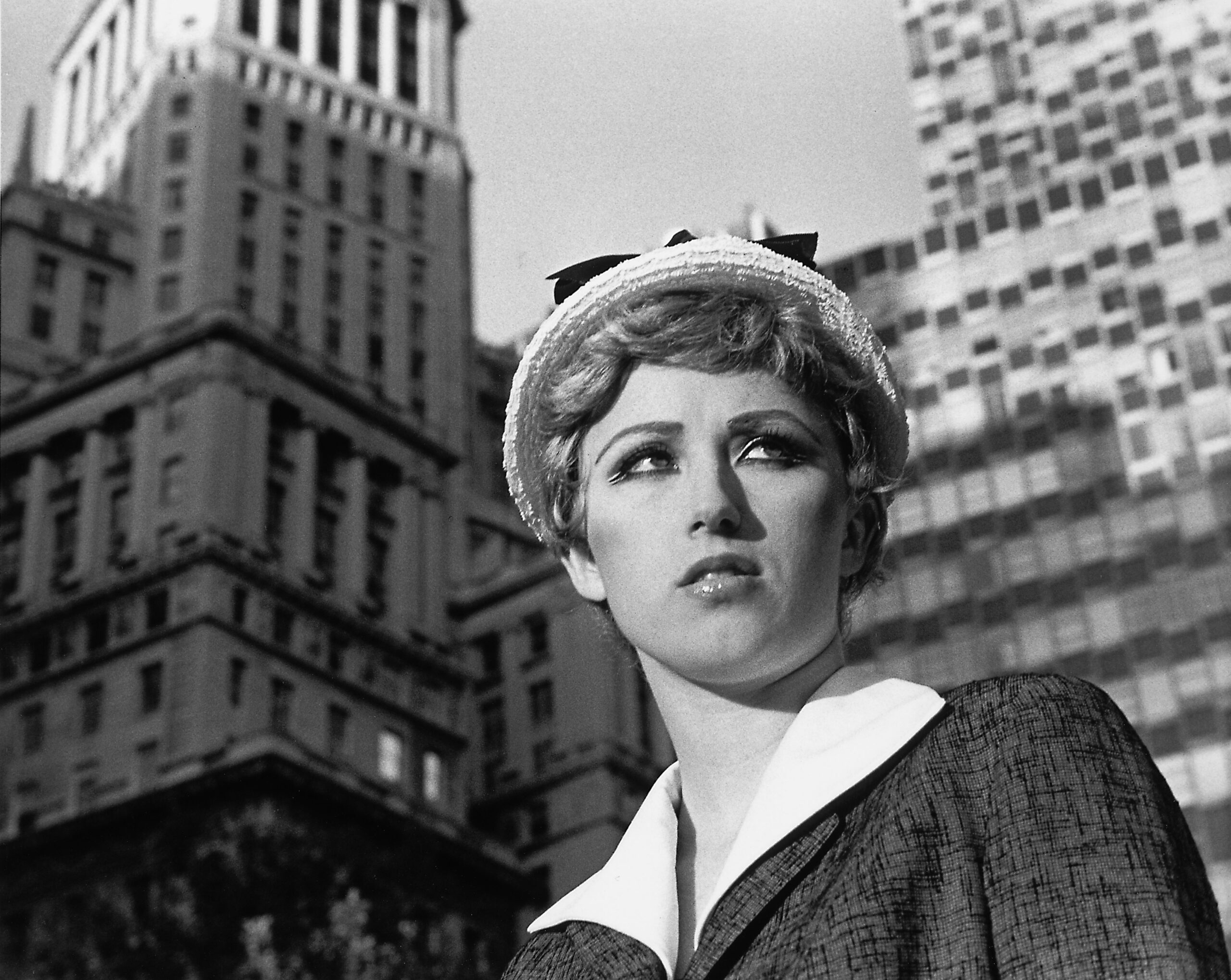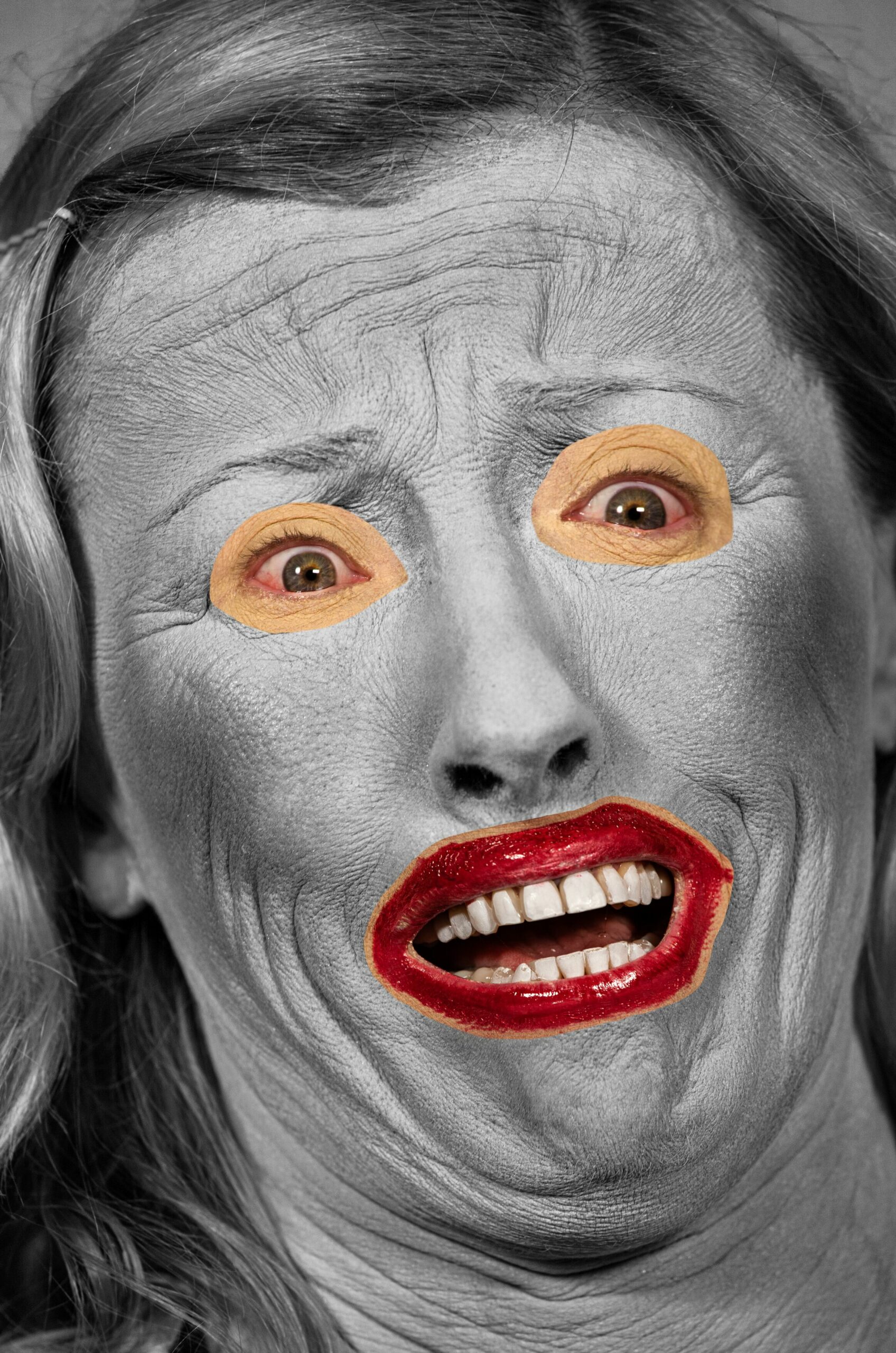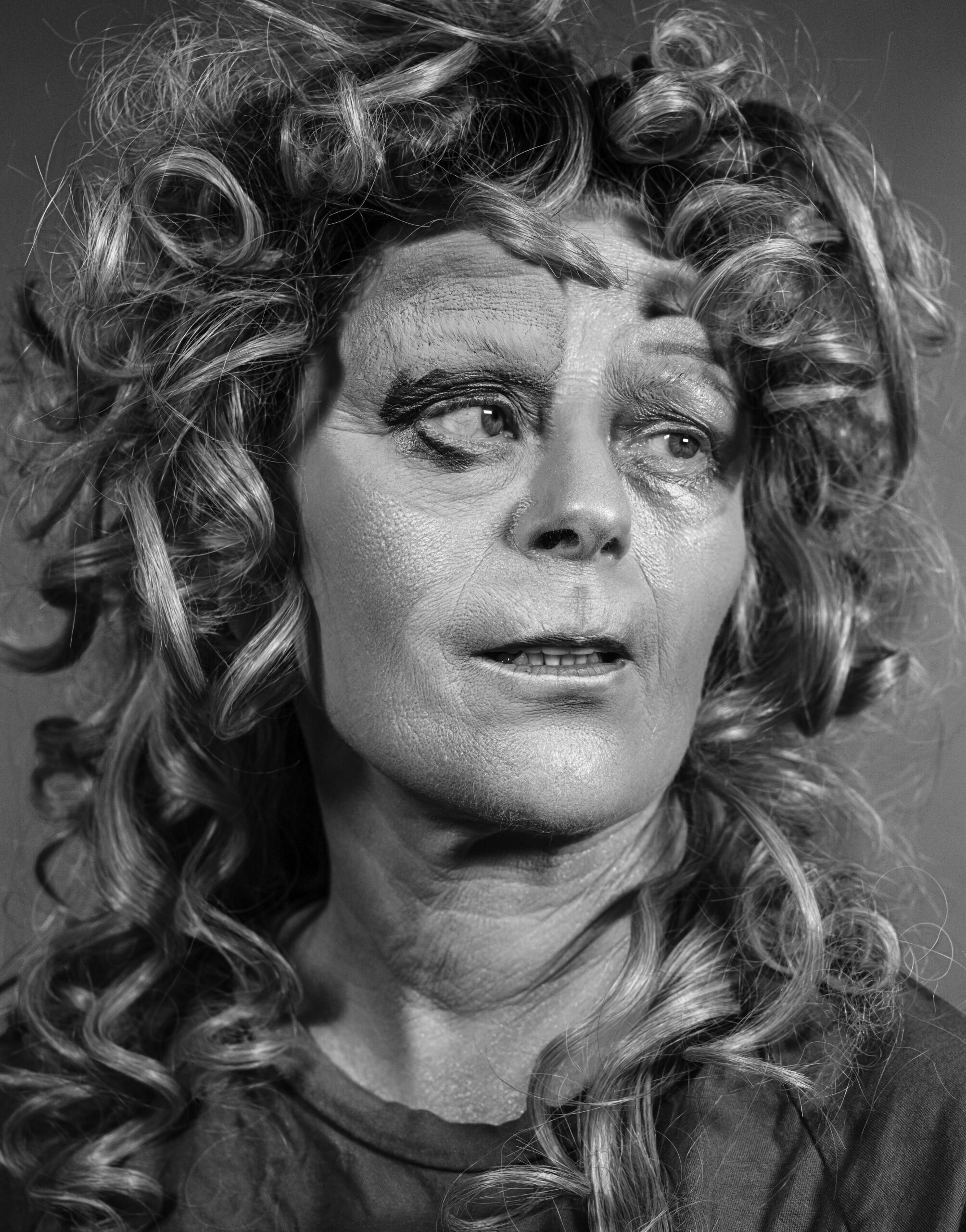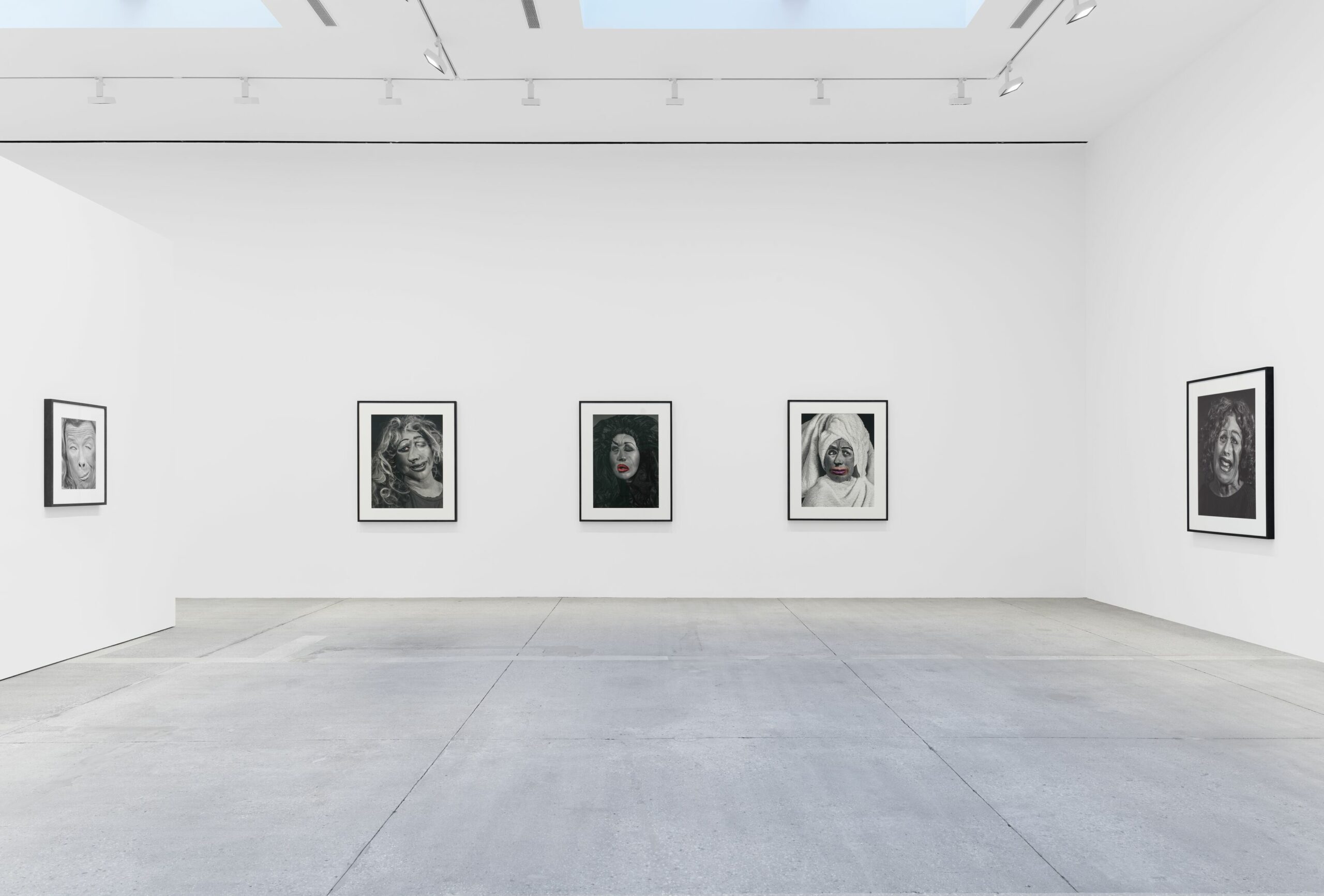‘At first I wanted to create a landscape of wrinkles, for a wallpaper or something,’ says Cindy Sherman about her latest body of work, currently on display at Hauser & Wirth, Wooster St, New York. Looking at the final form of these images, they’re not a wallpaper of wrinkles, but they aren’t far off. Her new series of collaged portraits, largely in black and white, show in great detail the wrinkled skin, enlarged pores and caked makeup on an aging face. Occasional pops of colour highlight crow’s feet around the eyes, roughly-applied eyebrow liner, smeared red lipstick or whitened teeth. Sherman is now seventy years old, and it would be all too easy to assume that these images reflect the artist’s own anxieties about aging and the years to come. But what they actually expose is something much more exciting—an extension of her forty-year-long devotion to experimentation and tactile play.

Since the age of twenty-three, Sherman has documented nearly every inch of her body and face, making them iconic. Yet whilst Sherman has become a household name, she has kept her own identity remarkably concealed: something of a theatrical vanishing act. Sherman’s career has followed a succession of transformations. She transforms into someone unrecognisable in front of her own lens: unafraid to don a costume and wig in public, to become a plastic sex doll, a clown, a Hollywood actress on the run, or the pious Virgin Mary. In this latest group of works, the transition is not as seamless. Sherman has not entirely obscured her own image, but her face has been fragmented and warped in such a way that it becomes grotesque and can barely be recognised as her own. The result is not flattering: ‘Well that’s because of the high camera resolution,’ she laughs, ‘every wrinkle and distortion of my face is exposed and so, of course, people assume that this is a work about the aging process. But for the most part that is simply because that’s what’s there. Really this came from expanding on what I would have originally done with makeup, where I transform the look of a mouth or an eye with lipstick or eyeliner, only instead I was using Photoshop.’


The series isn’t entirely devoid of messaging surrounding aging, but the message that underlies the work is actually rather hopeful, despite the vaguely menacing undertone. ‘I am not immune to fears about aging,’ says Sherman, ‘I won’t deny that a handful of times I have been tempted to edit a blemish or soften a wrinkle on my neck. Shooting digitally it’s so easy to do that. But this is the first time I have just gone wild with Photoshop, and I hope that actually it makes women just a little bit less afraid about these areas we are taught to fear.’ It’s a message that is uniquely incompatible with our current social media landscape where blurred, smoothed, sparkling faces are the norm. But then again, so is Sherman’s entire ethos.

This new series of work came out of the creative lethargy brought on by the Covid-19 pandemic. ‘Covid really threw me off, and I was really struggling to come up with ideas,’ says Sherman. ‘I was looking at old work I had shot around thirteen years ago, and then, at the beginning of last year, I turned them black and white and that’s when I realised I could make it work by tweaking the contrast and the colour to make them look more menacing but less realistic. Of course, they weren’t realistic to begin with, but being in colour they seemed more present and the black and white gave them a more timeless feel. After playing around with those, I decided to start shooting some new versions of those images and trying to mix them up so that they weren’t so angry looking. Ironically, that wasn’t because I was feeling angry, I was just trying to create as many wrinkles as I could by squinting my eyes and grimacing a certain way.’
Every one of Sherman’s projects has begun with a prop or an accessory (be it a wig or a pair of pyjamas found in a French flea market) and has developed from there, the wig or the costume determining who this person is, what they are doing, where they are going. From there the artist sits in front of the mirror and begins to build the character, usually constructing a background behind her using objects found around the house. It’s a process imbued with theatricality and freedom. Just the thought of it is a little tempting, a reminder that we could all be this brave if we wanted to be. But for this recent body of work the process was a little different.

The process that Sherman undertook to create this body of work has been a painstakingly precise and careful one. She describes shooting the newer images and then going through hundreds of images, picking out individual eyes, mouths, eyebrows and head shapes from each image. Finally, she was left with a folder containing hundreds of disconnected facial features. From there she began layering them in Photoshop, finding that occasionally layers would ‘pop out’ in colour, a frustrating feature of Photoshop that Sherman alchemized, noting that when this happened the images began to come alive in different ways: ‘It’s like if you were looking at a dummy and you noticed that one eye was open and it was staring at you.’
In one of the images, red lipstick can be seen smeared across the woman’s teeth, set against an otherwise black and white photograph. It is impactful not just because it presents a statement about women aging, and missing the mark with their lipstick, but because Sherman has constructed another character, one who has her own narrative unfurling too quickly for the subject to notice the lipstick on her teeth. Sherman’s deliberate and pointed decisions, regarding the layering and colour, certainly make for surreal narratives. Unmistakably, these are another Cindy Sherman masterclass in storytelling.
Written by Emily Burke





